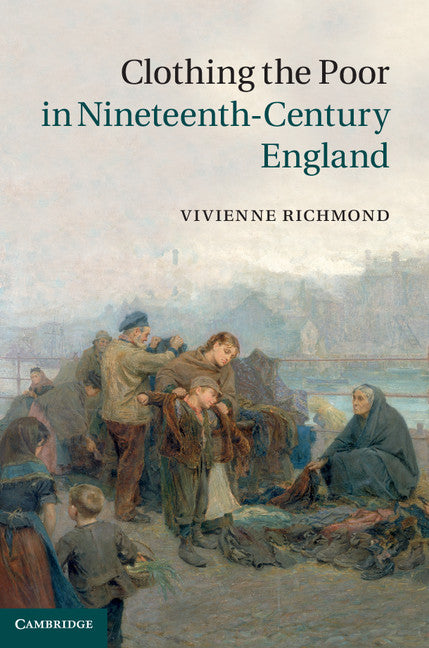Freshly Printed - allow 4 days lead
Couldn't load pickup availability
Clothing the Poor in Nineteenth-Century England
A pioneering study of the importance of dress to the collective and individual identities of the nineteenth-century English poor.
Vivienne Richmond (Author)
9781107042278, Cambridge University Press
Hardback, published 19 September 2013
355 pages, 14 b/w illus. 2 tables
23.5 x 15.7 x 2.5 cm, 0.67 kg
'Vivienne Richmond tells a very sad historical story, about the bodily and psychological misery of a large proportion of the population in nineteenth-century Britain; but she is not afraid to be wry, or ironic, or outraged and sometimes very funny, when appropriate.' Carolyn Steedman, University of Warwick
In this pioneering study Vivienne Richmond reveals the importance of dress to the nineteenth-century English poor, who valued clothing not only for its practical utility, but also as a central element in the creation and assertion of collective and individual identities. During this period of rapid industrialisation and urbanisation formal dress codes, corporate and institutional uniforms, and the spread of urban fashions replaced the informal dress of agricultural England. This laid the foundations of modern popular dress and generated fears about the visual blurring of social boundaries as new modes of manufacturing and retailing expanded the wardrobes of the majority. However, a significant impoverished minority remained outside this process. Clothed by diminishing parish assistance, expanding paternalistic charity and the second-hand trade, they formed a 'sartorial underclass' whose material deprivation and visual distinction was a cause of physical discomfort and psychological trauma.
Introduction: identifying the poor, locating their clothes
1. Setting the standard: working-class dress
2. 'Frankly a mystery': budgeting for clothes
3. 'Poverty busied itself': buying clothes
4. 'Woman's best weapon': needlework and home-made clothing
5. 'The struggle for respectability'
6. The sense of self
7. 'The bowels of compassion': clothing and the Poor Law
8. 'An urgent desire to clothe them': ladies' clothing charities
9. 'We have nothing but our clothes': charity schools and servants
10. 'The greatest stigma and disgrace': lunatic asylums, workhouses and prisons
Conclusion: no finery
Bibliography.
Subject Areas: Clothing & footware manufacture [TDPH], Social & cultural history [HBTB], Modern history to 20th century: c 1700 to c 1900 [HBLL], British & Irish history [HBJD1]


